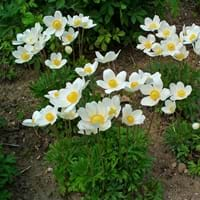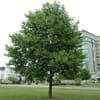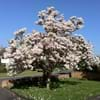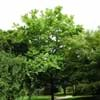Life Span
Perennial
Perennial
Type
Tree
Tender Perennial
Origin
Northeastern United States, Mid-Atlantic United States, Southeastern United States, Central United States
Mediterranean
Types
Ardis, Arnold, Aureomarginatum
Blue Anemone, Greek Windflower, Carolina Anemone, Chinese Anemone
Number of Varieties
Not Available
Habitat
Bluffs, low mountains, Moist Soils, Woodlands
Wild
USDA Hardiness Zone
5-9
8-12
Sunset Zone
1a, 1b, 2a, 2b, 3a, 3b, 4, 5, 6, 7, 8, 9, 10, 11, 12, 14, 15, 16, 17, 18, 19, 20, 21, 22, 23
4, 5, 6, 7, 8, 9, 10, 11, 12, 13, 14, 15, 16, 17, 18, 19, 20, 21, 22, 23, 24
Habit
Pyramidal
Clump-Forming
Minimum Height
Not Available
Minimum Width
Not Available
Flower Color
Orange, Light Yellow
Sky Blue
Flower Color Modifier
Bicolor
Not Available
Fruit Color
Lime Green, Brown
Not Available
Leaf Color in Spring
Green, Light Green
Green
Leaf Color in Summer
Green
Yellow, Green
Leaf Color in Fall
Yellow, Light Yellow, Yellow green
Not Available
Leaf Color in Winter
Not Available
Not Available
Leaf Shape
Irregular
Compound
Plant Season
Spring, Fall
Spring
Sunlight
Full Sun, Partial Sun
Partial Sun, Partial shade
Type of Soil
Clay, Loam
Loam
The pH of Soil
Acidic, Neutral
Acidic, Neutral
Soil Drainage
Average
Average
Bloom Time
Late Spring
Early Spring, Spring, Late Spring, Early Summer
Tolerances
Soil Compaction
Salt
Where to Plant?
Ground
Ground, Pot
How to Plant?
Seedlings
Seedlings
Plant Maintenance
Low
Medium
Watering Requirements
Do Not over Water, Keep the ground moist but not water-logged, Requires regular watering
Medium, Prefer drip-irrigation instead of Over-head watering, Use Mulches to help prevent water loss during hot and windy weather, Water Deeply
In Summer
Ample Water
Lots of watering
In Spring
Moderate
Moderate
In Winter
Average Water
Average Water
Soil pH
Acidic, Neutral
Acidic, Neutral
Soil Type
Clay, Loam
Loam
Soil Drainage Capacity
Average
Average
Sun Exposure
Full Sun, Partial Sun
Partial Sun, Partial shade
Pruning
Prune ocassionally, Remove dead branches
Prune prior to new growth, Remove dead or diseased plant parts, Remove deadheads
Fertilizers
All-Purpose Liquid Fertilizer, fertilize in spring, Fertilize the soil instead of direct applying, Mulch
All-Purpose Liquid Fertilizer
Pests and Diseases
fusarium canker, nectria canker, yellow-poplar weevil
Botrytis collar rot, Crown gall, Cucumber mosaic, Downy mildew, Impatiens necrotic spot, Leaf curl, Phytophthora, Rhizoctonia crown rot, Root rot, Rust, Sclerotinia blight, Southern blight
Plant Tolerance
Soil Compaction
Drought
Flower Petal Number
Not Available
Single
Foliage Texture
Coarse
Fine
Foliage Sheen
Matte
Matte
Attracts
Birds
Not Available
Allergy
no allergic reactions
Skin irritation
Aesthetic Uses
Showy Purposes
Not Used For Aesthetic Purpose
Beauty Benefits
Not Available
Not Available
Environmental Uses
Shadow Tree, Shelter for wildlife
Air purification
Medicinal Uses
Arthritis, Digestion problems, Fever, Inflammation, Wounds
Asthma, Cough, Gout, Menstrual Disorders, Stomach pain
Part of Plant Used
Whole plant
Flowers, Leaves
Other Uses
Food for animals, Grown for shade, Used as Ornamental plant, Used in Furniture
Not Available
Used As Indoor Plant
No
No
Used As Outdoor Plant
Yes
Yes
Garden Design
Feature Plant, Shade Trees, Street Trees
Bedding Plant, Container, Mixed Border, Rock Garden / Wall, Wildflower
Botanical Name
LIRIODENDRON tulipifera
ANEMONE 'Harmony Blue'( HARMONY SERIES)
Common Name
Tulip Poplar, Yellow Poplar
Anemone, Harmony Blue Anemone
In Hindi
ट्यूलिप पेड़
रत्नज्योति
In German
Tulpenbaum
Anemone
In French
tulipier
Anémone
In Spanish
árbol de tulipán
Anémona
In Greek
δέντρο τουλίπα
ανεμώνη
In Portuguese
árvore de tulipa
Relutantemente
In Polish
tulipanowiec
Zawilec
In Latin
Tulipa arbore
VivoSocial
Phylum
Tracheophyta
Magnoliophyta
Class
Magnoliopsida
Magnoliopsida
Order
Magnoliales
Ranunculales
Family
Magnoliaceae
Ranunculaceae
Genus
Liriodendron
Anemone
Clade
Angiosperms, Magnoliids
Not Available
Tribe
Not Available
Not Available
Subfamily
Not Available
Not Available
Importance of Tulip Tree and Anemone
Want to have the most appropriate plant for your garden? You might want to know the importance of Tulip Tree and Anemone. Basically, these two plants vary in many aspects. Compare Tulip Tree and Anemone as they differ in many characteristics such as their life, care, benefits, facts, etc. Every gardener must at least have the slightest clue about the plants he wants to plant in his garden. Compare their benefits, which differ in many ways like facts and uses. The medicinal use of Tulip Tree is Arthritis, Digestion problems, Fever, Inflammation and Wounds whereas of Anemone is Asthma, Cough, Gout, Menstrual Disorders and Stomach pain. Tulip Tree has beauty benefits as follows: Not Available while Anemone has beauty benefits as follows: Not Available.
Compare Facts of Tulip Tree vs Anemone
How to choose the best garden plant for your garden depending upon its facts? Here garden plant comparison will help you to solve this query. Compare the facts of Tulip Tree vs Anemone and know which one to choose. As garden plants have benefits and other uses, allergy is also a major drawback of plants for some people. Allergic reactions of Tulip Tree are no allergic reactions whereas of Anemone have Skin irritation respectively. Having a fruit bearing plant in your garden can be a plus point of your garden. Tulip Tree has no showy fruits and Anemone has no showy fruits. Also Tulip Tree is not flowering and Anemone is not flowering . You can compare Tulip Tree and Anemone facts and facts of other plants too.





